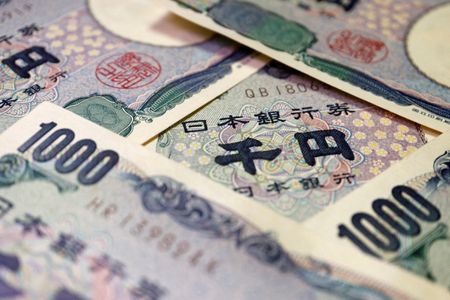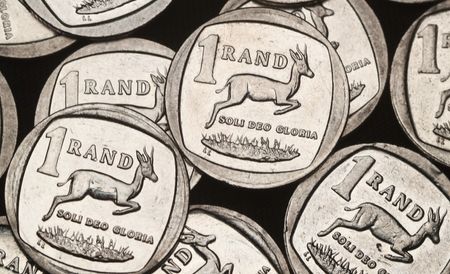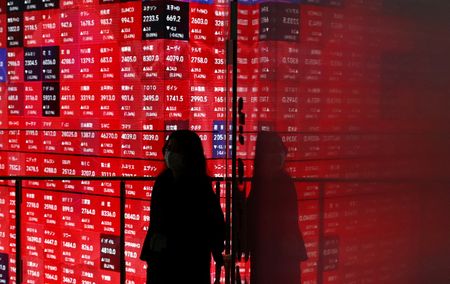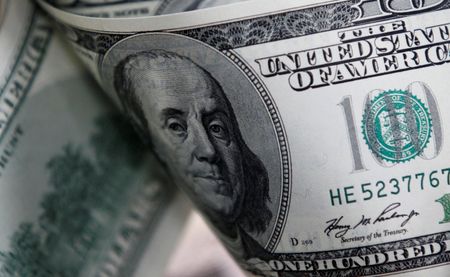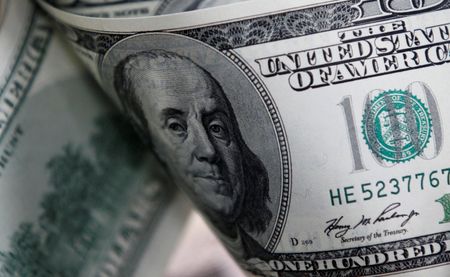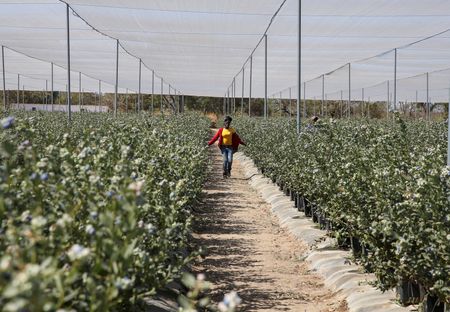By Hannah Lang
NEW YORK (Reuters) -The yen touched an eight-week high versus the dollar on Thursday after a Bank of Japan policy board member advocated continued interest rate hikes, while sterling slid as the Bank of England cut rates.
The pound fell sharply after the Bank of England cut interest rates as expected, but forecast higher inflation and weaker growth, with two officials calling for an even larger rate cut.
Sterling later pared some of those losses, having touched a one-month high on Wednesday. It was last down 0.54% at $1.2438.
Money markets now price in around 67 basis points of further BoE easing by the end of the year.
“The pound’s losses may prove somewhat limited: the services-driven British economy is largely sheltered against trade war risks,” Karl Schamotta, chief market strategist with payments company Corpay in Toronto, said in a research note.
The dollar index was up against a basket of peers at 107.69, but it still hovered near the lowest level since the start of last week, with investors beginning to entertain prospects that a global trade war could be averted.
In the absence of tariff headlines, markets looked ahead to the release on Friday of key U.S. monthly payrolls figures, the next major test for the U.S. monetary policy outlook.
The dollar index hit a two-year high of 110.17 on January 13, but has since retreated 2%.
“Driving this correction have been several factors, the largest of which has probably been this week’s tariff news, where it looks like the Trump administration has been using tariffs for transactional not ideological purposes,” said Chris Turner, global head of markets at ING.
U.S. President Donald Trump suspended planned tariff measures against Mexico and Canada this week, but imposed additional 10% levies on imports from China.
YEN STRENGTH
The yen strengthened as far as 151.81 per dollar – the strongest level since December 12 – in the Tokyo morning, after the BOJ’s Naoki Tamura said the central bank must raise rates to at least 1% or so in the latter half of fiscal 2025 with upward risks to prices rising.
Japan’s currency was last changing hands at 151.335 per dollar, up 0.82% on the previous day, paring some of the early gains after Tamura clarified that he didn’t mean that the neutral rate should be 1%.
“There seems to be a good amount of yen buying pressure today (Thursday). Not really sure what’s driving that, but it’s been very correlated to rates, and that’s breaking down just a little bit today,” said Brad Bechtel, global head of FX at Jefferies in New York.
The market is currently pricing in a quarter-percentage-point BOJ rate hike by September.
“Tamura is known to be on the hawkish side,” although his comments initially “fired up yen longs,” said Shoki Omori, chief global desk strategist at Mizuho Securities.
Conversely, a quarter-percentage-point rate cut by the Federal Reserve is fully priced in for July, with markets expecting a total of 46 basis points of reductions by the December meeting, according to LSEG data.
U.S. Treasury Secretary Scott Bessent said on Wednesday that while Trump wants lower interest rates, he will not ask the Fed to cut rates.
Canada’s loonie was at C$1.431 versus its U.S. counterpart after rising to the highest level since December 17 at C$1.4270 overnight. The Mexican peso was down 0.45% at 20.474 per dollar.
The euro edged down 0.19% to $1.0382.
(Reporting by Hannah Lang in New York; additional reporting by Greta Rosen Fondahn and Kevin Buckland; Editing by Shri Navaratnam, Mark Potter, Susan Fenton, Will Dunham and Paul Simao)

